This post may contain affiliate links. Please read our disclosure policy.
Jajangmyeon or Korean black bean noodles is a Korean Chinese dish that is loved by many people! I love making mine with pork belly – as the fat renders out, it adds another depth of flavor to my noodles. The fresh wheat noodles are super bouncy and chewy, and pairs perfectly with the sauce. Top the dish off with sliced cucumber for a refreshing contrast!
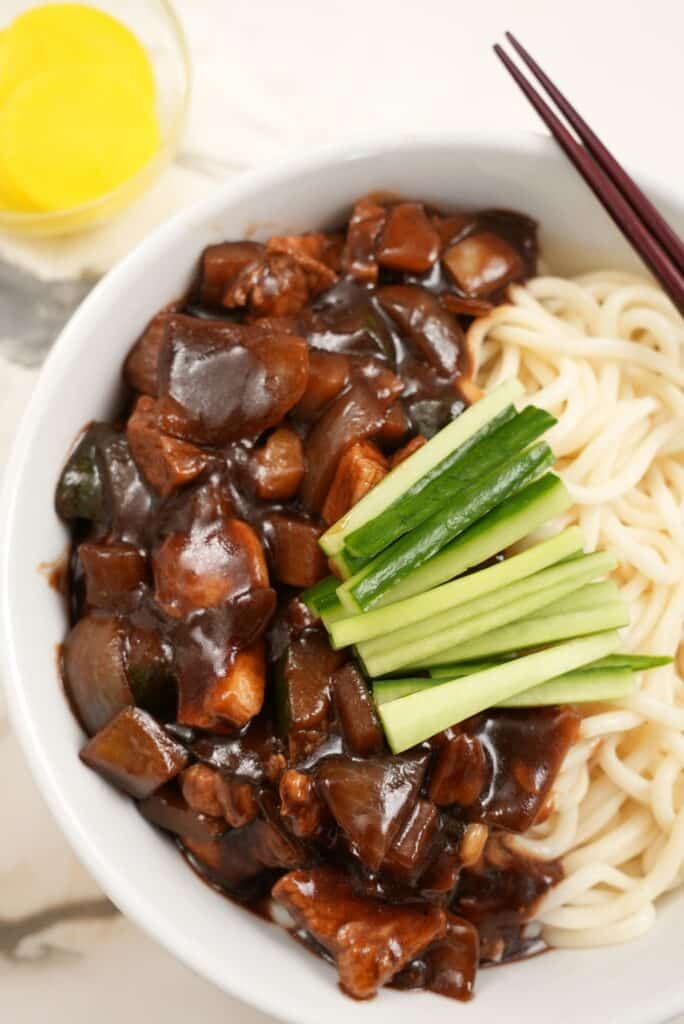
Watch the Jajangmyeon Recipe Video Below!

Ingredients for Jajangmyeon
Of all the Korean food, Jajangmyeon is one of the most recognizable because of how delicious it is! Learn how to make these this Korean noodle dish in under 30 minutes with this recipe!
- pork belly – cut into 1″ pieces (you can substitute with Pork shoulder). This dish is traditionally made with cubed pork belly but you can substitute with another protein of your choice (chicken, beef, or even seafood). If you want to make it vegetarian, you can use mushrooms or firm tofu and cook them the same way instructed in the recipe
- vegetables – I used zucchini, daikon radish, potatoes, and a white onion.
- I like this combination because while similar, they’re different in softness and texture. The flavors of all three are mild enough to pair nicely with the sauce, which is on the saltier side. You can sub in with other vegetables like cabbage or carrots if you prefer.
- black bean paste – Korean black bean paste (also called ‘chunjang’) is a salty, slightly bitter paste made from fermented soy beans to create a black soybean paste. It is a key ingredient to this dish and there is no substitute 🙁 I get mine from my local H Mart (Korean grocery chain) but I’ve also seen it sold on Amazon. This is sometimes labeled as Korean black bean paste or Chinese black bean paste, and it’s a key ingredient for making the savory black bean sauce for this Korean noodle dish!
- water or chicken stock
- kosher salt to taste
- black pepper
- cornstarch slurry – cornstarch, sugar, and water
- wheat noodles
- yellow pickled radish – optional garnish
- sliced cucumbers – optional garnish

What type of noodles should I use for Jajangmyeon?
Use fresh Korean wheat noodles for the most authentic version of this dish. If you can’t find Korean wheat noodles, you can substitute for fresh udon or a thick, dried noodle of your choice. Once you have cooked your noodles according to the package directions, immediately rinse them under cold water – this will stop the cooking process so your noodles remain perfectly al dente.
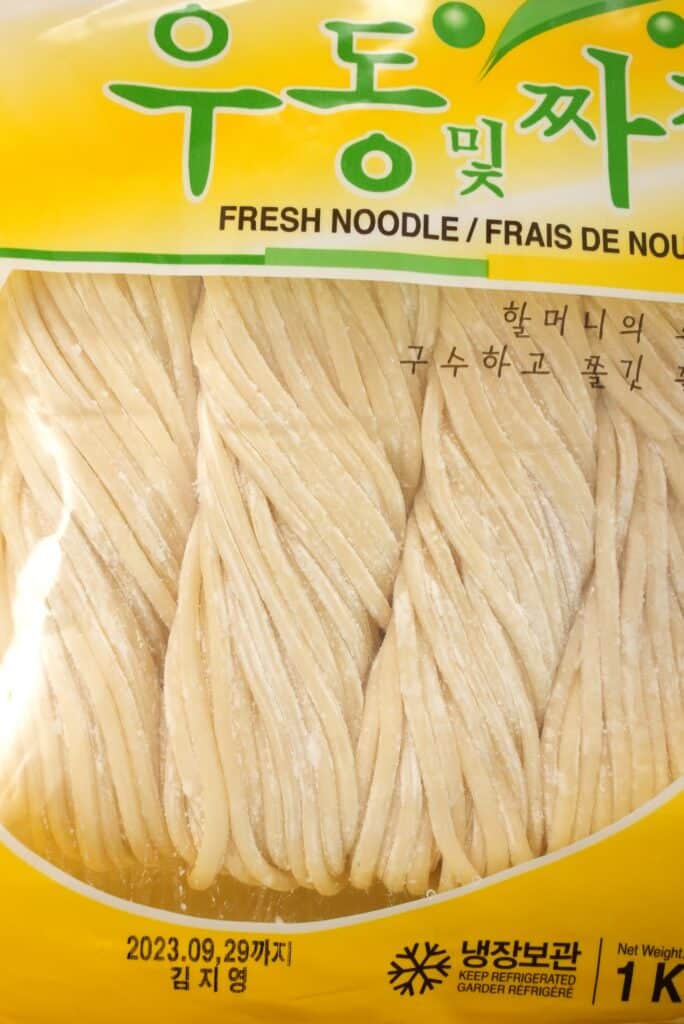
Cooking Jajangmyeon: Recipe Instructions
1. Cut the pork belly and vegetables
Start by cutting pork belly into 1″ pieces. Next, cut daikon radish, zucchini, potato, and onion into 1/2″ chunks.


2. Cook the Korean wheat noodles
Cook noodles according to packaging instructions, until al dente. Immediately rinse under cold water and drain – this will keep the noodles chewy and bouncy.
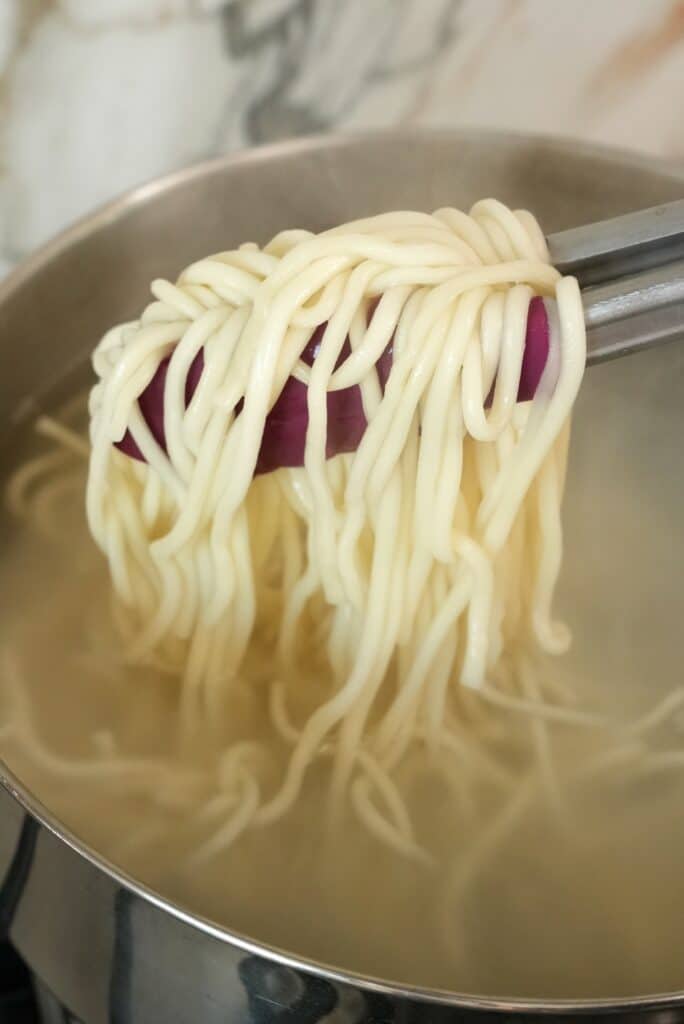
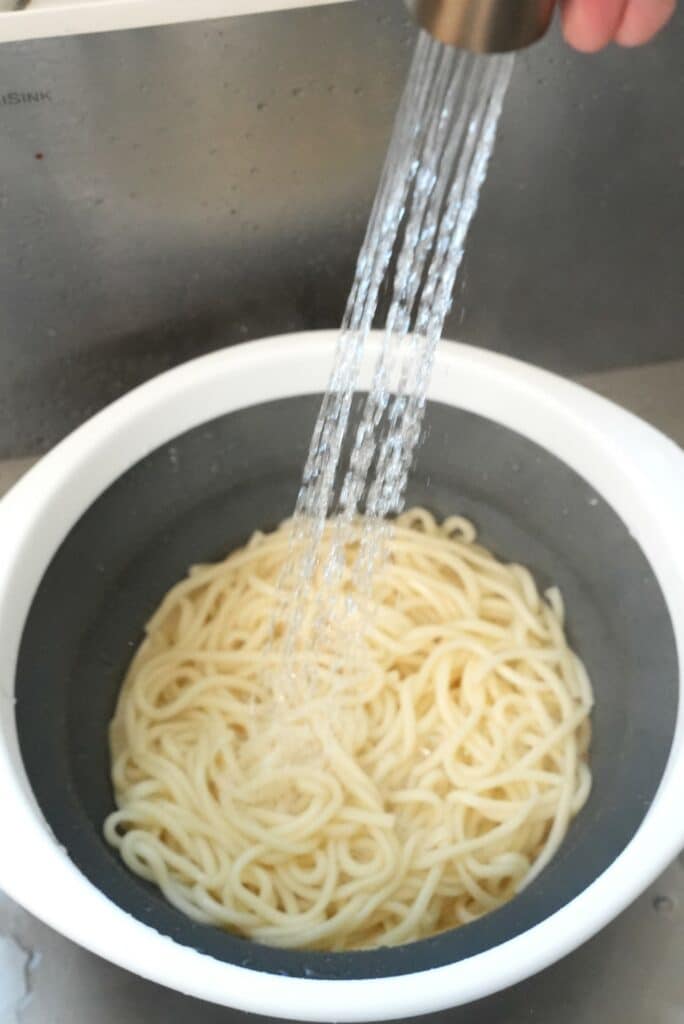
3. Cook the pork belly until golden browned
Brown pork belly pieces over medium high heat in 1 tbsp of neutral oil for 2-3 minutes to render out some fat.

4. Add the vegetables and seasonings
Add vegetable chunks into pan of pork belly pieces and stir fry until softened (3-4 minutes). Season with kosher salt and black pepper.
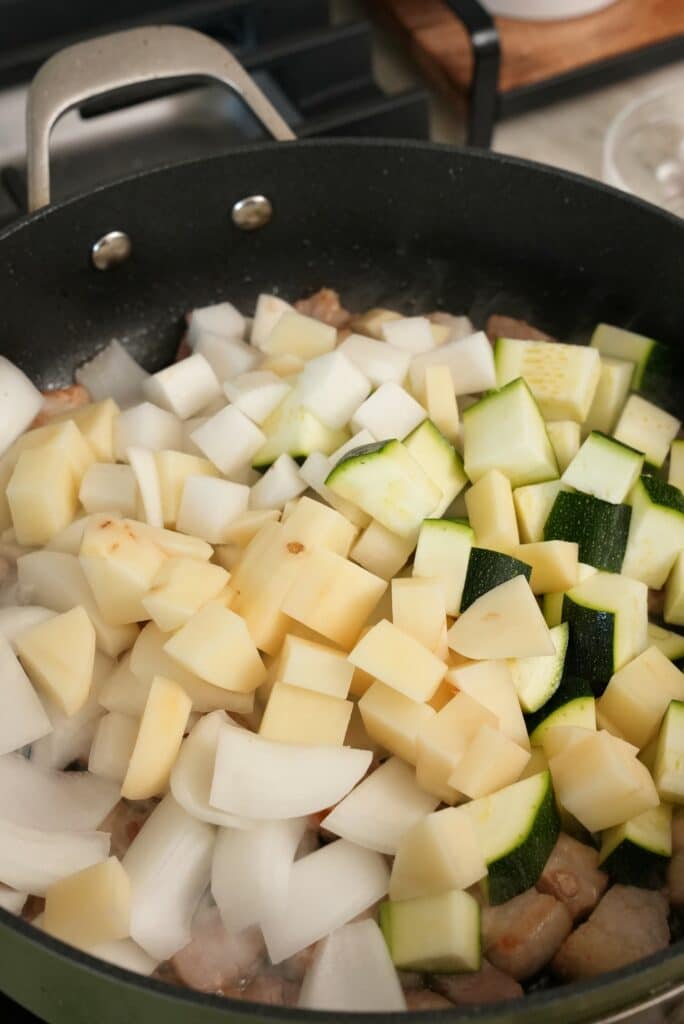
5. Add the Korean black bean paste
In your pan, create a small well in the center of your pork and vegetable chunks. Add black bean paste and fry for 2 minutes before mixing well with the pork and vegetable chunks. The sauce is raw out of the container so we will need to fry it for a few minutes to bring out the flavor. Once the black bean paste is fried, mix it with the meat and vegetables until fully coated.
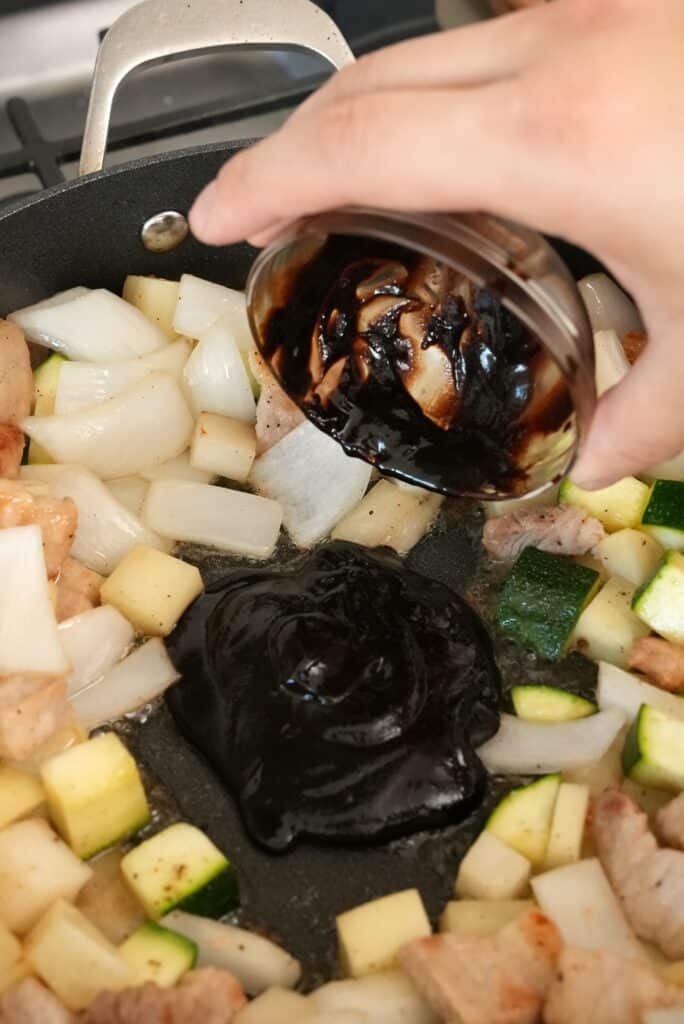
6. Add water and simmer
Add water to the pork belly and vegetables. Cover and simmer on medium low heat for 8-10 minutes (or until vegetables are tender). Meanwhile, in a separate bowl, mix cornstarch, sugar, and water into a slurry.

7. Add the cornstarch slurry and serve with noodles
Once the sauce has cooked and the potatoes are tender, add the cornstarch slurry into sauce and stir until thickened. Season with additional salt and pepper to taste. Pour sauce over noodles, mix, and enjoy!

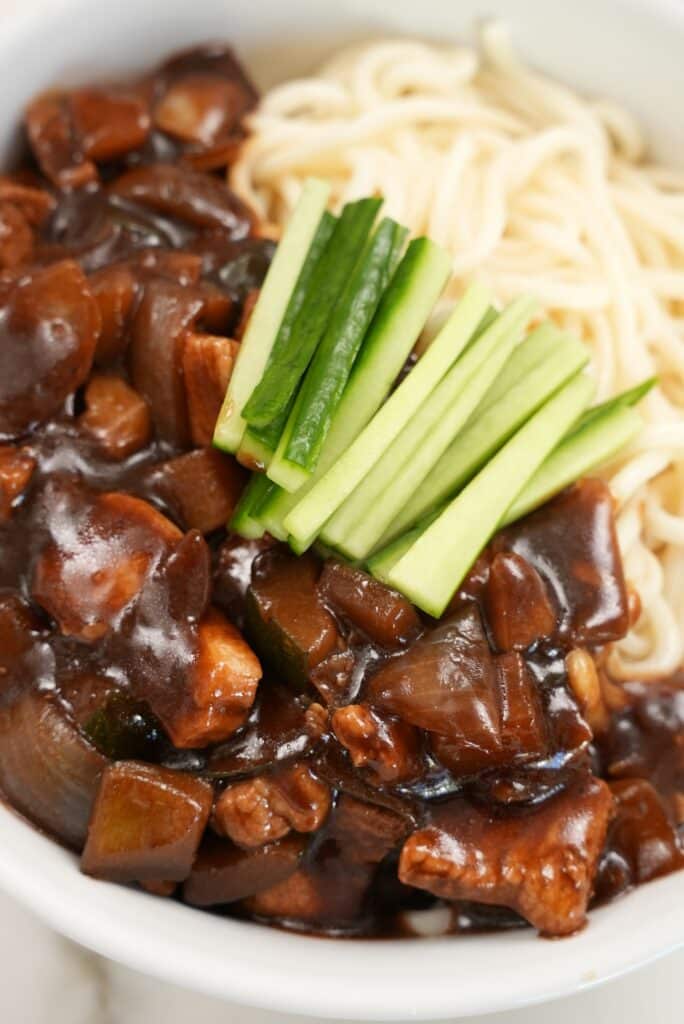
Pro Tips for the best Jajangmyeon!
- Cornstarch Slurry – A cornstarch slurry is a mixture that is used in cooking to thicken WITHOUT powdery lumps or additional flavors/colors! This is the secret to so many of your favorite dishes that have a thick, glossy sauce. My #1 tip is make sure your cornstarch slurry has not separated before adding it in – I always try to re-stir right before!
- Cooking the Pork Belly – Ensure the pork belly is golden brown and you can see that the fat has rendered out of the pork. This fat will allow you to sauté the vegetables adding more flavor to your Jajangmyeon sauce!
- Noodles – Use fresh Korean wheat noodles for the most authentic version of this dish. If you can’t find Korean wheat noodles, you can substitute for fresh udon or a thick, dried noodle of your choice. Once you have cooked your noodles according to the package directions, immediately rinse them under cold water – this will stop the cooking process so your noodles remain perfectly al dente. Drain the water well and pour the sauce on top immediately to enjoy!
Can I make the Jajangmyeon sauce ahead of time?
You can easily make this sauce in advance to make Jajangmyeon during the week! Save the sauce and store in an airtight container for up to 3 days in the refrigerator. When ready to cook, heat up the sauce in a pan and cook the noodles according to package directions. Add the sauce on top of the noodles and enjoy!

If you liked this Jajangmyeon recipe, check out some of the most popular Chinese and Korean recipes on the blog!
If you tried this Jajangmyeon or any other recipe on my website, please leave a 🌟 star rating and let me know how it went in the comments below!
Jajangmyeon (Noodles in black bean sauce)

Ingredients
- 8 oz pork belly, cut into 1" pieces
Vegetables
- 1 cup daikon radish, cut into 1/2" chunks
- 1 cup zucchini, cut into 1/2" chunks
- 1 potato, medium; cut into 1/2" chunks
- 1/2 white onion, cut into 1/2" chunks
- 1/3 cup black bean paste
- 1.5 cups water, or chicken stock
- 1/2 tsp kosher salt, to taste
- 1/4 tsp black pepper, to taste
Cornstarch slurry
- 2 tbsp cornstarch
- 1 tbsp sugar
- 1/4 cup water
Noodles and Garnish
- 1 lb wheat noodles, I used fresh Korean wheat noodles
- yellow pickled radish, sliced
- cucumbers, sliced into matchsticks
Instructions
- Cut pork belly into 1" pieces. Cut daikon radish, zucchini, potato, and onion into 1/2" chunks.
- Cook noodles according to packaging instructions, until al dente. Immediately rinse under cold water and drain – this will keep the noodles chewy and bouncy.
- Brown pork belly pieces over medium high heat in 1 tbsp of neutral oil for 2-3 minutes to render out some fat.
- Add vegetable chunks into pan of pork belly pieces and sauté until softened (3-4 minutes). Season with kosher salt and black pepper.
- In your pan, create a small well in the center of your pork and vegetable chunks. Add black bean paste and fry for 2 minutes before mixing well with the pork and vegetable chunks.
- Add water. Cover and simmer on medium low heat for 8-10 minutes (or until vegetables are tender). Meanwhile, in a separate bowl, mix cornstarch, sugar, and water into a slurry.
- Add slurry into sauce and stir until thickened. Season with salt and pepper to taste. Pour sauce over noodles, mix, and enjoy!
Notes
Nutrition
Nutrition information is automatically calculated, so should only be used as an approximation.


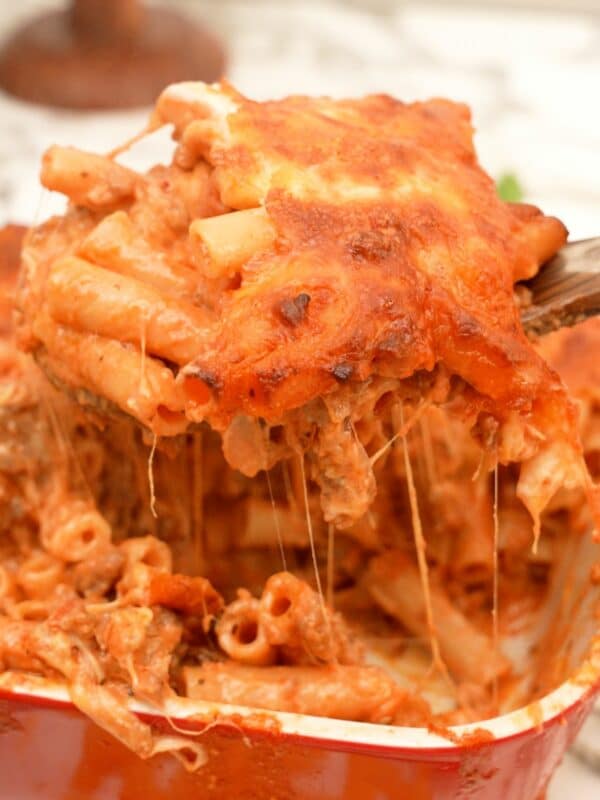
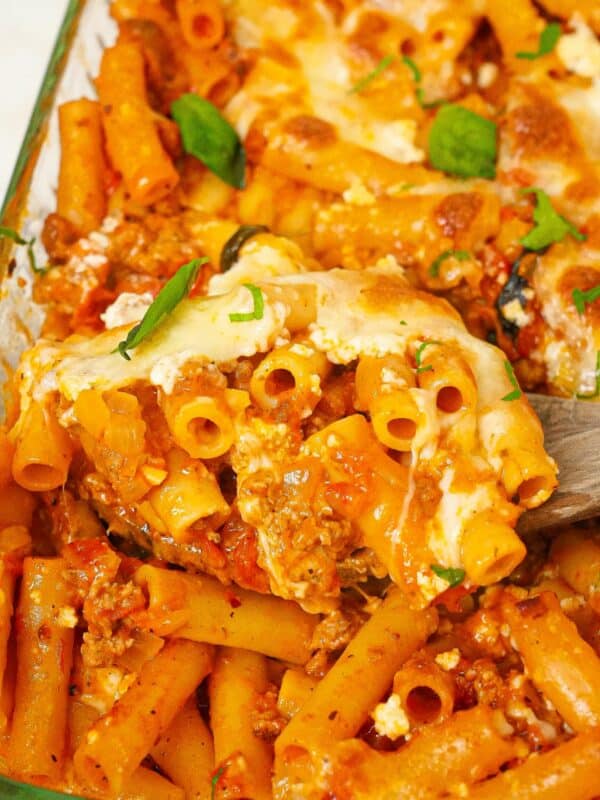
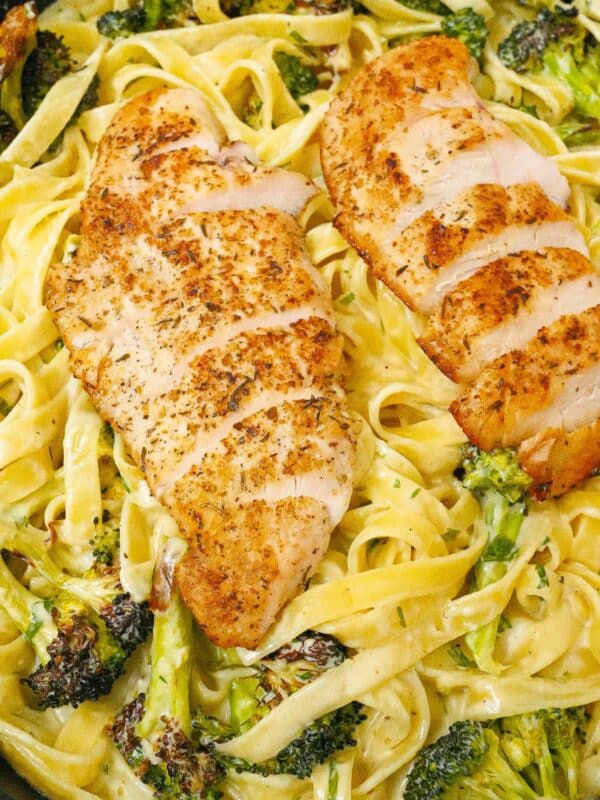







I fell in love with black bean noodles after working at a KBBQ. Excellent recipe!!!
Insta: nat_perry
I fell in love with black bean noodles after working at a KBBQ. Excellent recipe!!!
One of my favorite recipes…love Jajangmyeon!
@goldenjar
Legit!!
Jajangmyeon pairs perfectly with a night of watching K-dramas. The flavor and the slurping of the noodles give me so much comfort. I love this recipe because it’s very easy to follow, and I especially appreciate the pictures of the products to help with shopping for the ingredients. This is so helpful for someone who doesn’t have Korean stores nearby. Plus, the leftovers taste perfect the next day too. Highly recommended for a cozy and delicious meal!
I was intreged by this recipe so make it and honestly not too bad.
@knock.knock2299
Love how you make it so easy to make!
@pokles09 ig
Very good recipe, extremly rich in flavour. Will definitely cook it again
I love Korean food, especially their noodles. Thanks for sharing this recipe. This noodles are the best. I also did try some other recipes you shared. They are very best. Thank you so much! 😊
One of my favorite dishes when I was a young girl. @lgrigor